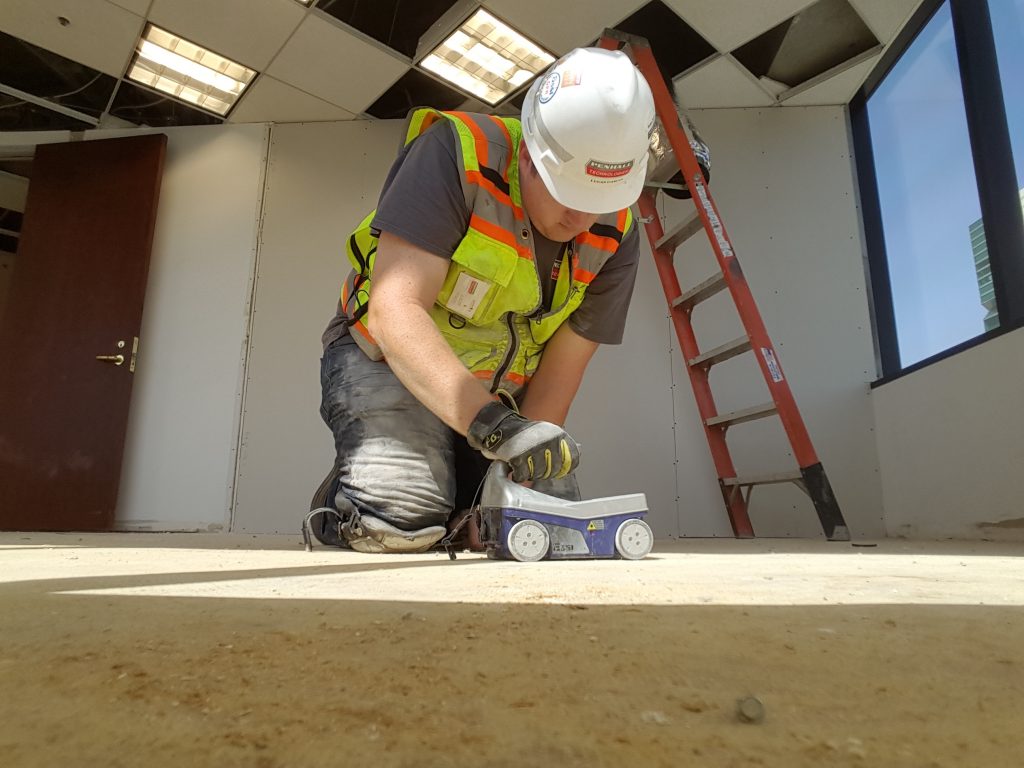Discovering the Depths: A Comprehensive Overview to Concrete Scanning and Its Diverse Applications
In the world of building and construction and facilities development, the thorough process of concrete scanning holds a pivotal duty in making sure the structural honesty and safety and security of jobs. As modern technology remains to progress, the applications of concrete scanning have broadened much beyond plain surface-level analyses. From finding rebar and post-tension cords to mapping out spaces and avenues hidden within concrete structures, the capacities of contemporary scanning strategies are both outstanding and crucial. Nonetheless, real deepness of concrete scanning's possible reaches also better, branching right into unanticipated industries and triggering innovative remedies. The interconnected internet of possibilities that concrete scanning provides is not just fascinating yet also essential for the advancement of different sectors.
Relevance of Concrete Scanning
Recognizing the relevance of concrete scanning is vital in making sure the safety and integrity of structures throughout building and renovation jobs. Concrete scanning makes use of advanced modern technologies such as ground-penetrating radar (GPR) and electromagnetic induction to spot ingrained things, voids, or various other anomalies within concrete frameworks.
In addition, concrete scanning plays a crucial function in ensuring conformity with structure codes and guidelines that mandate the protection of existing architectural parts during building and construction activities. By accurately mapping out the inner make-up of concrete, scanning technologies allow construction experts to make enlightened decisions that promote the structural security and toughness of structures and facilities tasks. In essence, the value of concrete scanning exists in its ability to guard both the structural stability and the employees associated with building undertakings.
Technologies Used in Concrete Scanning
Concrete scanning depends on sophisticated innovations such as ground-penetrating radar (GPR) and electro-magnetic induction to properly detect ingrained things and abnormalities within concrete frameworks. Ground-penetrating radar runs by sending out high-frequency electro-magnetic waves right into the concrete.
Electro-magnetic induction, on the various other hand, works by producing electromagnetic areas around a concrete structure through a transmitter coil. When steel items are present within the concrete, they interrupt these electromagnetic areas, causing eddy currents to stream via the steel. By measuring the adjustments in the electro-magnetic fields with a receiver coil, the system can pinpoint the location of metal items in the concrete.
These innovative modern technologies play an essential duty in non-destructive screening, making sure the security and stability of concrete structures in numerous markets.
Applications in Construction Sector
Within the building market, concrete scanning technology Recommended Site finds diverse applications that enhance job performance and safety and security. In addition, concrete scanning is made use of for situating voids, such as air pockets or areas of wear and tear within concrete, which can jeopardize the overall strength of a framework. Concrete scanning plays a crucial role in top quality control by validating the density of concrete covers over reinforcement, guaranteeing compliance with style specifications and criteria.

Security Benefits of Concrete Scanning
In the realm of building safety and security, the implementation of concrete scanning technology offers a paramount advantage in preemptively recognizing prospective hazards and fortifying structural honesty. By utilizing advanced scanning methods this such as ground-penetrating radar (GPR) and electro-magnetic induction, construction groups can accurately find rebar, post-tension cables, avenues, and other hidden items within concrete structures. This positive method considerably lowers the risk of unexpected strikes during exploration, reducing, or coring activities, thus protecting against pricey problems, injuries, and project delays.
Furthermore, concrete scanning improves worker safety by providing real-time details regarding the structural problem of concrete components. By addressing potential security problems immediately, concrete scanning adds to producing a safe and secure working environment and alleviating the probability of structural failings or accidents on building websites.
Future Patterns in Concrete Scanning
Emerging improvements in scanning modern technology are positioned to reinvent the field of concrete evaluation and analysis. By taking advantage of the power of AI, these systems can examine large quantities of data accumulated during scanning processes to give more accurate and thorough understandings into the condition of concrete frameworks.
One more substantial pattern is the advancement of more mobile and straightforward scanning tools. Miniaturization of scanning devices enables less complicated accessibility to restricted rooms and remote places, making examinations a lot more thorough and reliable. Furthermore, innovations in wireless communication technologies allow real-time information transfer and evaluation, facilitating quicker decision-making procedures.
Furthermore, there is an expanding concentrate on sustainability in concrete scanning modern technologies - RainierGPR Concrete Scanning. Manufacturers are progressively integrating environment-friendly products and energy-efficient features into their devices to minimize ecological impact. These future trends are established helpful resources to enhance the performance, accuracy, and sustainability of concrete scanning methods, forming the sector's future landscape
Conclusion
Finally, concrete scanning plays a vital duty in the building and construction market by guaranteeing the safety and security and performance of various projects. By making use of sophisticated technologies, such as GPR and radar imaging, experts are able to properly discover possible risks within concrete structures. The applications of concrete scanning are huge and remain to progress, making it a crucial device for maintaining the stability of structures and framework. As modern technology advances, the future of concrete scanning holds promising advancements for boosting building and construction processes.

Comments on “Enhance Job Performance with RainierGPR Concrete Scanning Services”